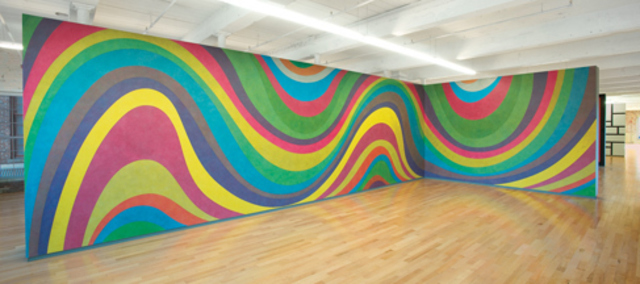
Description
Many of Sol LeWitt’s ink wall drawings consist of thick bands of color. Until 1996 these bands took the form of parallel lines or concentric arcs. In 1996, however, LeWitt began to experiment with covering walls with curvy bands of uneven widths. The artist had previously worked with irregular lines in his early graphite and colored pencil drawings, which called for ‘not-straight lines.’ This can be seen in Wall Drawing 46, also on display at MASS MoCA. Yet, unlike the irregular bands, the not-straight lines were usually organized according to specific rules. The organic nature of these later forms represents a shift away from the rigorous systems that governed much of the artist’s previous work. This shift carried over into the painted wall drawings that LeWitt began creating in 1997.
Like many of LeWitt’s ink drawings from the mid- to late-1990s, the colors of the bands in Wall Drawing 793B are composed of layers of gray, yellow, red, and blue ink, according to the specifications of the artist. The layered application of color results in an extraordinary range of jewel-toned hues.
Another version of the wall drawing on display at MASS MoCA, Wall Drawing 793C, was created for the remodeled entrance of the Wadsworth Athenaeum in Hartford in April 1996.
Backstory
The organic nature of this wall drawing dictates that the draftsmen project LeWitt’s original drawing onto the wall. To delineate the different bands during this projection process at MASS MoCA, the draftsmen coded them with shapes and objects.
Details
- Work Date:
- January 1996
- Medium:
- Color ink wash
- Credit Line:
- Courtesy of the Estate of Sol LeWitt